We’ve been helping UK drivers buy, sell, transfer, and retain DVLA numbers for decades.
DVLA number plates are official vehicle registrations issued by the UK’s Driver and Vehicle Licensing Agency. These plates follow strict formats and can include current, prefix, suffix, or dateless styles.
People use number plates from the DVLA to personalise their cars, hide the age of a vehicle, or simply make a statement on the road. Whether you're searching for names, initials, places, words or phrases, DVLA number plates offer something for everyone.
At Regtransfers, we specialise in helping you find and purchase the perfect registration with ease and confidence.
Introduction
In this ultimate guide to buying and selling DVLA number plates, you’ll learn everything you need to know about DVLA plate registration, purchasing a personalised license plate, how to sell a private registration number, and more.
We’ll explain how the DVLA manages registration numbers and which types of personalised DVLA plates are available. This guide also covers the DVLA number plate auctions, how the DVLA assigns a number plate, and DVLA private plates valuation.
For all your questions about buying and selling DVLA number plates, this Regtransfers ultimate guide has your answers.
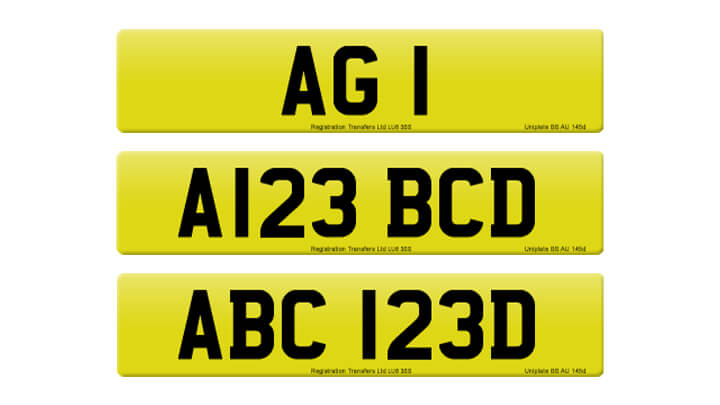
Types of DVLA Plates
Many of the names you hear used to describe private number plates are really just synonyms. Everyone has their preferred term. Even DVLA uses several different names on their website: personalised registrations, personalised number plates, private number plates - they all mean the same thing.
A few terms have come to have a specific meaning to some people: cherished number plates, for example, is often the name preferred by owners of classic, vintage and veteran cars. Some people consider personalised registrations to be those that display a name or initials - something personal - rather than just a random word or cryptic in-joke.
However, there are distinct kinds of registrations that really do have distinguishing features.

The first DVLA registrations to feature a date code are known as suffix registrations. The term suffix refers to the last letter in the character combination. Registrations in this category take the following form: ABC 123D. In the case of this example, the letter D is a code representing the year 1966.
Suffix numbers often provide very good representations of initials, names and words. Search for your own perfect registration.

Prefix numbers were the second DVLA registrations to feature a date code and they were issued when the suffix combinations ran out. The term prefix refers to the first letter in the character combination. Registrations in this category take the following form: A123 BCD.
In the case of this example, the letter D is a code representing the period from 1st August 1986 to 31st July 1987.
Prefix numbers also provide very good representations of initials, names and words. Search for your own perfect registration.

Eventually, the available character combinations for prefix registrations also ran out and so DVLA introduced the current style of registration number. This format features a two-digit number code that serves as the year indicator. Current registrations take the form KV15 APF, where 15 represents the period from March 2015 to September 2015.
Some current style years have more to offer than others in terms of private registration possibilities, but this format also provides some excellent representations. Search for your own perfect registration.

Most registrations include a date code. On current style number plates that date code takes the form of the numbers that appear on the plate. The prefix style plates that preceded the current format featured a single-letter year code at the beginning of the registration, whereas the even older suffix style registrations had a year letter at the end of the registration.
The DVLA regulations say that private plates must have year codes as old, or older, than the age of the car that displays them. Making a car appear younger by displaying a more recent registration number is not allowed. Plates that do not contain one of the obvious and familiar year codes are known as dateless number plates and are very popular, especially among buyers who wish to conceal the age of their car. These numbers can be displayed on vehicles of any age.

The format of DVLA plates in Northern Ireland differs from that in the rest of the UK. Irish number plates do not have the obvious year code letter or numbers that English, Welsh and Scottish registrations do: this means that, like other dateless plates, they can be assigned to vehicles of any age.
Northern Irish plates can be transferred to vehicles in Great Britain and so many of the dateless registrations you see on UK roads are actually numbers from Northern Ireland.

How to Buy DVLA Number Plates
There are several ways to buy a DVLA number plate, depending upon whether the registration in question has already been released or whether it is yet to be issued.
DVLA releases new registration numbers twice annually as part of their regular releases. They also sell unissued numbers in the DVLA auctions. These numbers may be purchased at the time of release or auction and are available to everyone. This means that acquiring one of these new DVLA registrations can be a bit of a race to purchase before someone else.
Many DVLA plates have already been issued and are owned by private individuals and dealers. Whereas recognised resellers such as Regtransfers have access to DVLA's stock of numbers for sale, DVLA is not able to sell those registration that are already owned by individuals and dealers. This means that the widest choice of available numbers is actually to be found with the independent dealers, rather than with DVLA. However, DVLA has an important part to play in the transfer of all private number plates whether they are sold privately or by dealers.
Search the UK's largest selection of quality private plates.
DVLA Number Plates for Sale
Twice a year, DVLA issues the registration numbers that will be assigned to new cars. It also sells registration numbers from newly issued series and numbers that were withheld from issue at the time of previous releases. More information about How DVLA issue car registrations.
Regtransfers provides search tools to help you find available number plates. Search for names, initials, sports numbers, naughty numbers, or dateless numbers to hide the age of your car. You can also search car makes and models – whatever your car, we can find you a number.
Search number platesNumber Plate Auctions
DVLA holds regular number plate auctions where it sells new and previously unreleased DVLA registrations.
Before the emergence of Covid-19, DVLA used to hold physical auction events where prospective buyers could attend and bid in person. Public health precautions meant that all DVLA auctions had to move online. DVLA currently gives a provisional date of June 2022 for the return of live auctions. Meanwhile, DVLA auctions continue as online events.
Regtransfers' own online auction provides an excellent alternative auction venue. It's the perfect place to find a bargain. We ensure that each transaction is safe and secure, so both buyers and sellers are protected. Regtransfers also takes care of all paperwork and formalities, making the experience easier for both buyer and seller.
Visit the Regtransfers' Auction.
Choosing DVLA Cherished Number Plates
There are many categories of DVLA cherished plates that may appeal to a prospective buyer. The range of choices depends on personal preference and budget.
The most affordable cherished registrations are low-priced dateless and initials plates. Despite the modest cost, registrations bearing initials and those with no year code have some benefits over more expensive types. While many people aspire to own a number plate spelling their name, plates displaying initials can be a little more subtle and discreet . They allow personalisation without drawing unwelcome levels of attention. For this reason, initials numbers have been the choice of a surprising number of famous people including Vinnie Jones, Sir Stirling Moss, TV Dragons Duncan Bannatyne and James Caan, jockey Frankie Dettori and actor Robert Hardy.
DVLA cherished plates in the dateless category are popular for their ability to mask the age of a car. It's much cheaper to buy a modestly priced cherished registration than it is to buy a new car every year!
Those with a bigger budget and less need for anonymity may opt for name number plates. There are very few ways to represent a name on a plate, so rarity gives name number plates additional value. Drivers of luxury and performance vehicles often buy registrations than contain a reference to their car's make or model.
Regtransfers has cherished registrations to cover all occasions and requirements. Our comprehensive search page will help you find the type of plate that suits you.
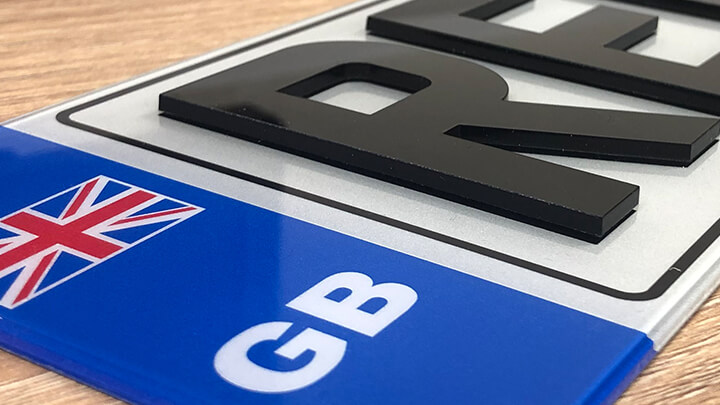
DVLA Approved Number Plate Suppliers
DVLA does not give approval or endorsement to suppliers of private registrations or acrylic number plates, and dealers are not permitted to claim or imply otherwise.
Suppliers are not affiliated with DVLA. Regtransfers is a DVLA recognised reseller of government private registrations stock. That means that we meet the requirements DVLA insists upon in order to afford that "recognised" status and link to our website from the DVLA website. It does not mean that we have a formal affiliation or business association with DVLA: we are truly independent.
Regtransfers is also a registered supplier of acrylic plates. Again, this doesn't mean that we have a special arrangement with DVLA - no dealer does. What it does mean is that we have to comply with regulations and standards that protect the consumer. You can be sure that the plates we supply comply with DVLA number plate regulations.
Find out more about How DVLA Issues car registrations.
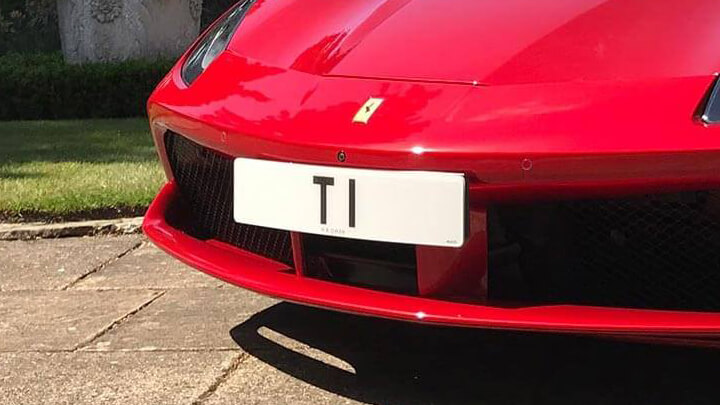
Assigning a DVLA Number Plate
Assigning is the process of putting a private number onto a vehicle. The process varies a little depending on whether one is putting a new DVLA number plate on a new vehicle, changing the registration from the original to a new one, or removing a private number plate and replacing it with the registration that was originally issued to the vehicle.
When you’re ready to put your personalised DVLA number onto a vehicle, you will need your V778 retention document to complete the transfer. You can apply to transfer your number from its retention document to a vehicle online or by post.
Put a DVLA Number Plate on a New Vehicle
If you want to assign your retained registration number to a new, previously unregistered vehicle, you will need to give your V778 retention document to your car dealer, who will usually be willing to make the assignment arrangements with DVLA on your behalf.
Change DVLA Number Plate
To change a DVLA number plate, you must apply to assign a private number. If the vehicle is already registered to you or to someone else that you bought the private number for, you can apply online or by post. If the number is for a used vehicle you just bought, you must wait for the DVLA to send you a new V5C in your name, then apply online or by post.
How to retain a DVLA cherished registration
You can complete the retention application process online at the DVLA website, or you can do it by post. If you want to retain your personal registration number by post you will need to send the following to DVLA:
- Your vehicle's V5C registration document (also known as the log book)
- Form V317 (Application to transfer or retain a vehicle registration number) - available to download on the DVLA website here.
- Payment of £80 to cover the official transfer fee
The address you will need is printed on the V317 form.
Unless you apply to transfer a specific replacement registration number onto your vehicle, DVLA will usually assign its original number back to it (the number it had before a personalised number plate was transferred to it).
After your retention is complete, DVLA will send you a replacement V5C showing the car's new registration: either its reassigned original number or a new personal registration if you have assigned one to it.
They will also send you a retention document, sometimes known as a retention certificate, for the personalised registration you are storing.
Swap DVLA Number Plates
If you want to swap two or more private numbers between two vehicles (or multiple), you must apply to remove and assign the number plate for each vehicle. You can complete this process by transferring from one vehicle to another.
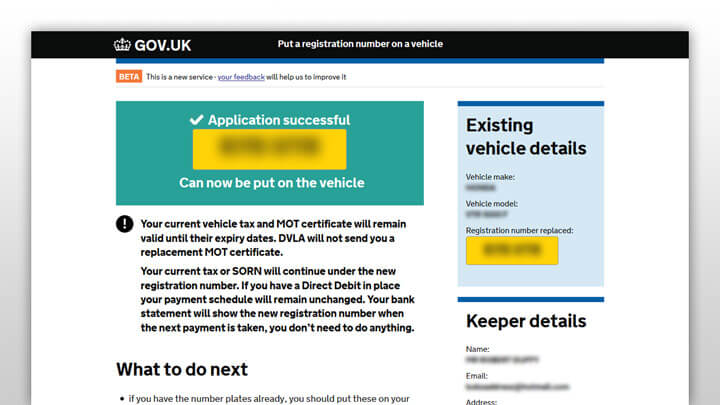
DVLA Number Plate Transfer
Transferring a DVLA number plate from one vehicle to another is a straightforward process, but it does require a fee and will take some time for the DVLA to process.
While transferring isn’t too complicated, some people prefer the experience and expertise of a professional team like Regtransfers.
DVLA Transfer Fee
To transfer a private registration from one car to another, you’ll have to pay the £80 transfer fee to the DVLA. You must also download and complete form V317 to submit along with your transfer.
DVLA Transfer Time
According to the DVLA, the transfer time takes between 4-6 weeks. However, the waiting time is usually much shorter than this. When a straightforward transfer is done online the process may be completed almost instantly.
DVLA Number Plates Retention
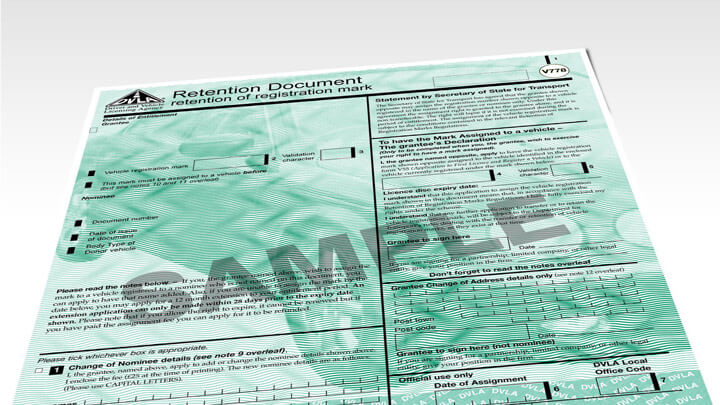
There are times when it may be necessary to store or hold a registration number without putting it on a vehicle: for example, when someone sells a car but wants to keep its private registration. In such circumstances one would take advantage of the DVLA number plate retention scheme. This is a kind of transfer whereby a DVLA registration number is taken off a vehicle and saved in the form of a certificate that the owner can use to put the number onto another vehicle whenever they are ready. This is very useful to people who may be temporarily without a car, or to collectors of private number plates who may own more personal registrations than vehicles.
Most registrations are eligible to be stored on retention. The exceptions are those numbers which are classified as non-transferrable.
What if my number plates are stolen?
If your private number plate has been stolen, it’s important to know what steps you should take to retrieve your registration number.
Find out how you can apply to the DVLA to retain your number plate.
What if my number plate is cloned?
Number plate cloning is the illegal process of copying a registration number and assigning it to another car. It can be difficult to know if your number plate has been cloned.
This guide covers the signs of number plate cloning and what actions to take if your private reg has been cloned.
DVLA Retention Certificate (Form V778)
A DVLA Retention Document (V778) is the certificate that represents the DVLA private registration that you want to store off a vehicle. It preserves your entitlement to the registration until you are ready to transfer it to someone else or assign it to a vehicle. You will need your V778 form when you are ready to assign your retained number and display it on a vehicle again.
For information on putting your retained number back on a vehicle, please see the section Assigning a DVLA number plate.
DVLA Retention Transfer
When you’re ready to put your personalised DVLA number on a vehicle again, you will still need your V778 retention document to complete the transfer. You can apply to transfer a number from a retention document to a vehicle online or by post. If it’s a new vehicle, you can give your V778 document to the dealer.
Find out how to retain a number plate.
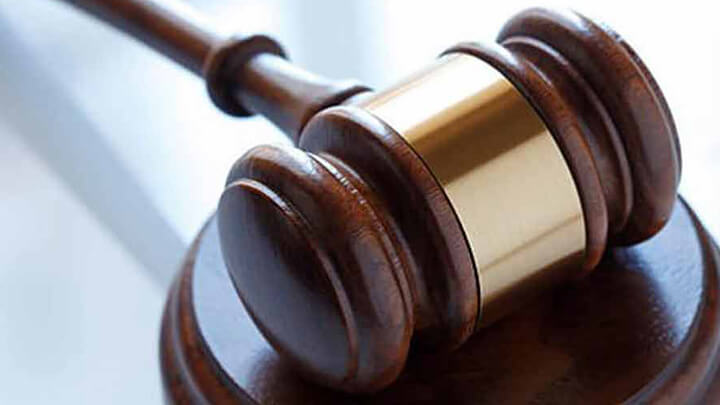
Selling Your DVLA Number Plate
You may sell a DVLA number plate by advertising it yourself in print and online ads, or by putting it up for auction. Unfortunately, the DIY approach does come with increased risks of error and fraud. Even well-known general auction sites are not free from opportunist criminals.
The alternative is to engage the services of an experienced, professional dealer to advertise your registration for you. A dealer will be able to present your number to a large, targeted audience of potential buyers. A professional dealer will take care of all paperwork and official formalities and will provide some extra protection against fraud.
Some dealers, such as Regtransfers, also operate specialist private number plate auctions where you may safely list your plate for sale.
A dealer may also offer to purchase your registration for their stock.
DVLA Private Plates Valuation
Lots of people find us by searching for a DVLA valuation service. They come to us when they discover that DVLA does not buy, or buy back, private registrations, and so they don't offer a valuation facility.
Regtransfers, on the other hand, does buy registrations and we will consider purchasing private number plates for our stock. Alternatively, we can advertise your number for sale for you. Our website enjoys a huge number of daily visitors who are searching for numbers like yours. If you ask us to help you see then your number will appear in our search results and be seen by all those potential buyers. Even better, there are no fees for advertising your registration.
Get a no-obligation Number plate valuation.
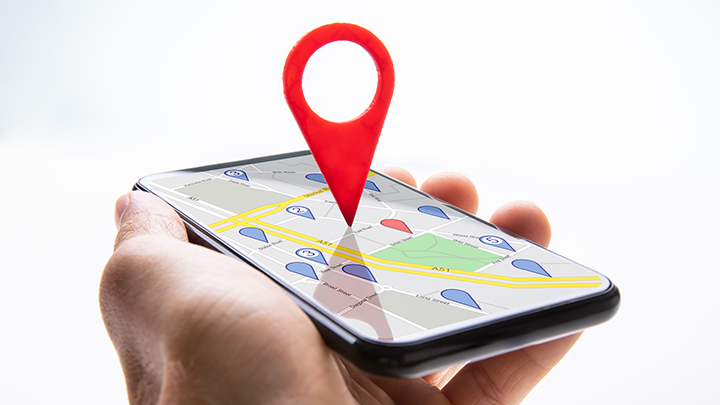
DVLA Local Offices
In the days before paper forms and envelopes were largely replaced by online services, the DVLA had a network of local offices.
Although none but the main Swansea office remains operational, Regtransfers maintains a historical record of those DVLA Offices.
Disclosure notice: While Regtransfers is a recognised reseller of DVLA personalised registrations, and a registered supplier of acrylic number plates, Regtransfers is neither part of the DVLA nor affiliated to it. Regtransfers is an independent private number plates dealer.

DVLA Frequently Asked Questions
These are the most common questions we get about DVLA number plates. If you can’t find what you’re looking for in our FAQs, feel free to contact us.
To put a private DVLA number on a vehicle, you must first purchase the right to display the private registration of your choice. This is what people mean by "buying" a private registration number. When you purchase your DVLA registration number it may be transferred to your vehicle by the dealer you buy from. If it is supplied on a certificate then you must complete the process to assign the number to your vehicle.
Assigning a number to a vehicle may be done online at the DVLA website or by post. To assign the number by post you will need the V750 or V778 document that you received when buying your registration. The document contains full details of how to complete the process by post including the documentation you may need and the criteria your vehicle must meet in order to qualify for assignment.
When DVLA have completed the assignment process they will send you a new V5C document showing your vehicle's new registration. You may not change your physical number plates before assigning the number.
Share this...